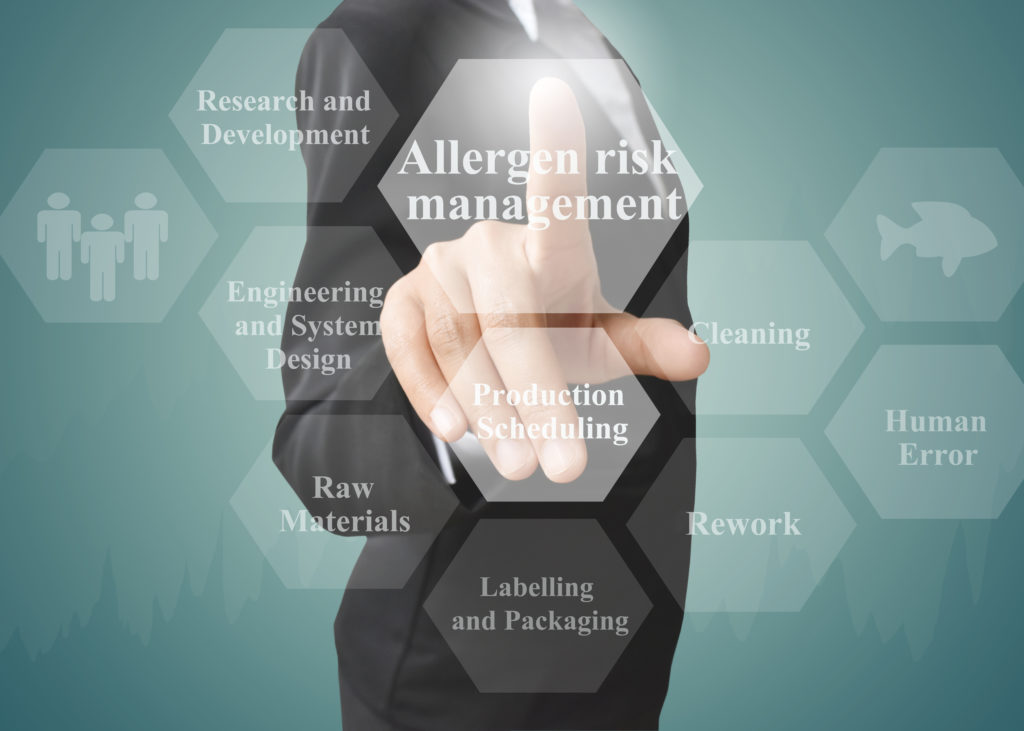
Food Safety
Allergen Cross-Contamination: Risks and Prevention, Part I
Worldwide, allergens are the primary culprit behind food product recalls, and there has been a dramatic increase in these events over the last several years. (1), (2) Beyond the considerable public health risk, a product recall can be financially devasting with an average food company price tag of $10 million (USD) or more in direct costs alone. Hazard Analysis and Critical Control Point (HACCP) guidance, available through the Codex Committee on Food Hygiene as well as the US Food and Drug Administration,(3) outlines the principles foundational to the effective identification, evaluation, and control of food safety hazards, including allergens:
- Principle 1: Conduct a hazard analysis.
- Principle 2: Determine the critical control points (CCPs).
- Principle 3: Establish critical limits.
- Principle 4: Establish monitoring procedures.
- Principle 5: Establish corrective actions.
- Principle 6: Establish verification procedures.
- Principle 7: Establish record-keeping and documentation procedures.

HACCP Principles 2 and 3 for Allergen Hazard Control
Assuming the proper hazard analysis has been conducted and quality document control procedures are in place, this two-part blog will briefly review the practical aspects of a robust allergen control program following HACCP guidance (Principles 2-6). Part I will discuss Principles 2 and 3.
Principle 2: Determine Critical Control Points (CCPs)
Cross-contamination, whether the result of naturally occurring allergens, undisclosed allergens or ineffective hygiene procedures, creates a significant hazard for food processors. Therefore, it is imperative to identify critical control points defined as points in the process where controls can be applied to prevent, eliminate, or dramatically reduce a safety hazard risk. Specific CCPs vary by facility but may include:
Sourcing and Supplier Management
Supplier partners should be adequately vetted via audit to ensure proper good manufacturing procedures and documentation. Allergen statements should be required for all relevant raw materials.
Raw Materials Testing
Incoming raw materials should be segregated, allergen tested and properly labeled to avoid inadvertent cross-contamination. Color-coding systems can be beneficial for the easy identification of allergens.
Production Lines and Workflows
Dedicated or limited-production lines, process, storage, and transport segregation are powerful tools to limit allergen exposure and potential cross-contamination. Read the complete whitepaper for additional details: Identifying the Risks for Allergen Cross-contamination in Production and Shipping
Principle 3: Establish Critical Limits
A critical limit is the maximum (or minimum) value to which a biological, chemical, or physical parameter must be controlled at a CCP. Each CCP should have one or more control measures to assure identified hazards are prevented, eliminated, or reduced to acceptable levels. Ensuring allergen proteins are detected at the appropriate levels is particularly challenging because definitive regulatory guidance on detection limits is lacking worldwide (with the exception of gluten).
Therefore, it is incumbent upon food processors to understand how allergen test manufacturers establish their limits of detection (LOD) to fulfill the critical limits principal of HACCP and thereby protect product integrity and public welfare.
The US FDA describes four methods that may be used to establish allergen test sensitivity (limit of detection threshold). They are as follows:
- Analytical Method
- Safety Assessment Method
- Risk Assessment Method
- Statutorily-Derived Method
Given the lack of statutory guidance, Hygiena® takes a dual-phase approach to establish allergen detection limits. The initial phase relies on the Analytical Method approach to reliably detect low levels of antigen while avoiding inadvertent cross-reactivity to deliver optimal test sensitivity and specificity. The second phase relies on third-party Safety Assessment and Risk Assessment analyses based on available clinical data. In this case, Hygiena refers to the scientific expert panel (VSEP) guidance behind Australia’s Voluntary Incidental Trace Allergen Labeling (VITAL). VITAL’s 2019 allergen threshold guidance was developed from published and unpublished data of low-dose oral food challenges in the United States, Australia, and the European Union.
This dedication to establishing the proper critical limits is only one of the benefits that position Hygiena as your premium HACCP partner, from environmental monitoring to allergen detection. Learn more about Hygiena’s Allergen Detection Solutions
In Part II of this blog series, we will explore HACCP Principles 4-6 and dive deeper into the user-friendly solutions Hygiena offers for effective and consistently reliable allergen testing.